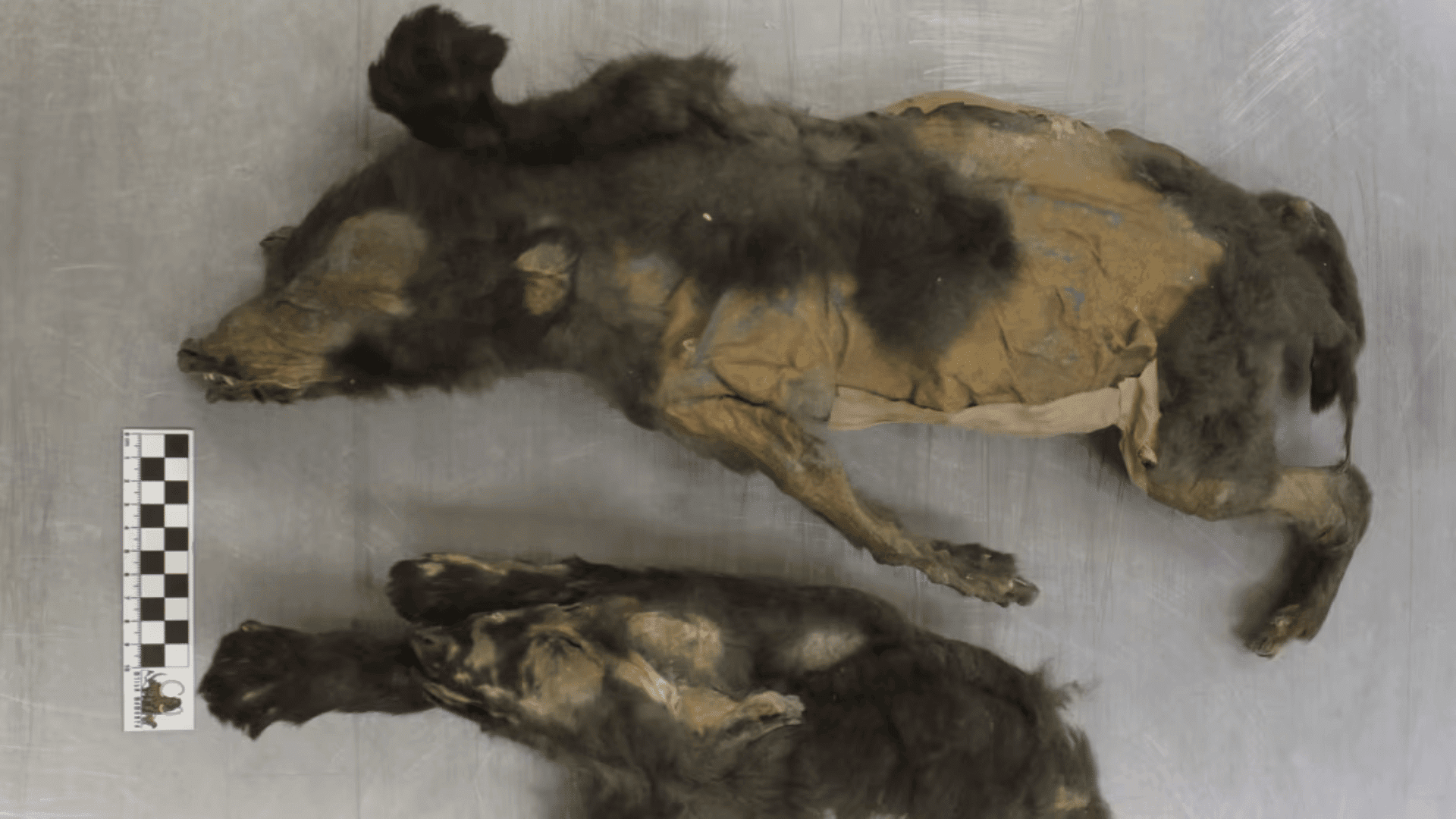New research suggests that 14,000-year-old well-preserved ice age “puppies” discovered in Northern Siberia may actually be wolf cubs. These “Tumat Puppies” were discovered at the Syalakh site, about 25 miles from the nearest village of Tumat. One was discovered in 2011, while the other was found in 2015.
Ice Age Wolf Pups

Naturally preserved in ice for thousands of years, these Tumat Puppies were still covered in fur and contained hints of their last meal in their stomachs. Researchers believe their last meals consisted of meat from a woolly rhinoceros and feathers from a small bird called a wagtail.
According to CNN, the animals’ remains were found near woolly mammoth bones that had been burned and cut by humans. Recent genetic data analysis of the gut contents and chemical signatures of the bones, soft tissue, and teeth suggest that the canids were 2-month-old wolf pups. The findings, published in the Journal of Quaternary Research, show no evidence that the animals interacted with people.
Researchers theorize that the wolf cubs, believed to be sisters, died when their underground den collapsed, triggering a landslide and trapping them inside, as there’s no indicator that they’d been attacked or injured. Because the animals are so well-preserved, studying them could reveal important information about the everyday life of ice age animals.
“It was incredible to find two sisters from this era so well preserved, but even more incredible that we can now tell so much of their story, down to the last meal that they ate,” wrote lead study author Anne Kathrine Wiborg Runge, formerly a doctoral student at the University of York and the University of Copenhagen, in a statement. “Whilst many will be disappointed that these animals are almost certainly wolves and not early domesticated dogs, they have helped us get closer to understanding the environment at the time, how these animals lived, and how remarkably similar wolves from more than 14,000 years ago are to modern day wolves.”
Similar to modern-day wolves, it appears the pups ate both plants and meat. The coloring of the woolly rhino fur is consistent with that of a calf, based on previous research.
“The hunting of an animal as large as a wooly rhinoceros, even a baby one, suggests that these wolves are perhaps bigger than the wolves we see today,” said study coauthor Dr. Nathan Wales, senior lecturer in archaeology at the University of York in England.
An analysis of plant remains in the cubs’ stomachs also revealed that the wolves lived in a dry environment that supported diverse vegetation such as willows, prairie grasses, and shrub leaves. Further study of the animals could allow researchers to learn more about the time period and the origins of domesticated dogs.








